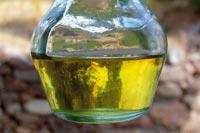Toxic substances in the degradation of oils and fats
In the Faculty of Pharmacy of the UPV/EHU jointly investigate oxidation and thermal degradation of lipids. Research began with oils, as 99% of the oil is lipid, but studies with other foods are also planned in the future.
Oxidation and thermal degradation
Researchers have investigated different oxidation processes under conditions of thermal degradation. For example, the oxidation produced at 70 C and in contact with the air, as well as the oxidation produced in the microwave, always below 190 C.
In the first process, oil degradation produces hydroperoxides and subsequently aldehydes. In the second case, however, aldehydes are mainly generated in oils.

In fact, this study detected for the first time the possible formation of toxic oxygenated aldehydes in lipid oxidation. These compounds are well known in medical studies for their genotoxic and cytotoxic activity, but in food research they were not known. In addition, they are considered indicators of cellular oxidative stress and causing degenerative diseases.
In addition, it should be noted that not all oils behave in the same way. Depending on the type of oil, some produce toxic compounds at higher speed and concentration than others. Virgin olive oil is clearly the least toxic and later produced in the heating process.
Technique used
Researchers have studied degradation processes considering liquids and gases. In fact, although the oil is liquid, it has several compounds in a gaseous state. Therefore, for the research of liquid oil nuclear magnetic resonance based on protons and infrared spectroscopy by Fourier transformation has been used. Gas has been investigated with gas chromatography and mass spectrometry. Both techniques have been complementary in the detection of toxic compounds.
Finally, to identify toxic aldehydes onToxic substances have compared the results in the degradation of oils and fats with some type substances and spectra of other aldehydes. Spectra, for example, were requested from US researchers investigating the presence of these compounds in damaged human tissues and cells.
Therefore, this study has opened a new line of research on food safety, as toxic oxygenated aldehydes have been found for the first time in food degradation.
Buletina
Bidali zure helbide elektronikoa eta jaso asteroko buletina zure sarrera-ontzian











